Solve Problems with Networks of Equations
Storyboard 
The models can be expressed in the form of networks of equations in which the different nodes are the variables of the system.
Once the network is established, it is possible to directly identify the equations that can be used to calculate each variable.
By identifying the variables that are given, it is possible to find the equations to be used and any necessary intermediate variables with their equations that allow said calculation.
The identification of the correct model for the problem that is being addressed not only allows to quickly find the necessary equations, it also reduces the risk of using an equation that is not applicable for the case that is being calculated.
ID:(1932, 0)
Equation: the path traveled
Image 
The equation of the path traveled
$\Delta s = s - s_0$
It can be represented as a (celestial) node associated to the nodes of the path traveled variable $\Delta s$, the initial position $s_0$ and the final position:
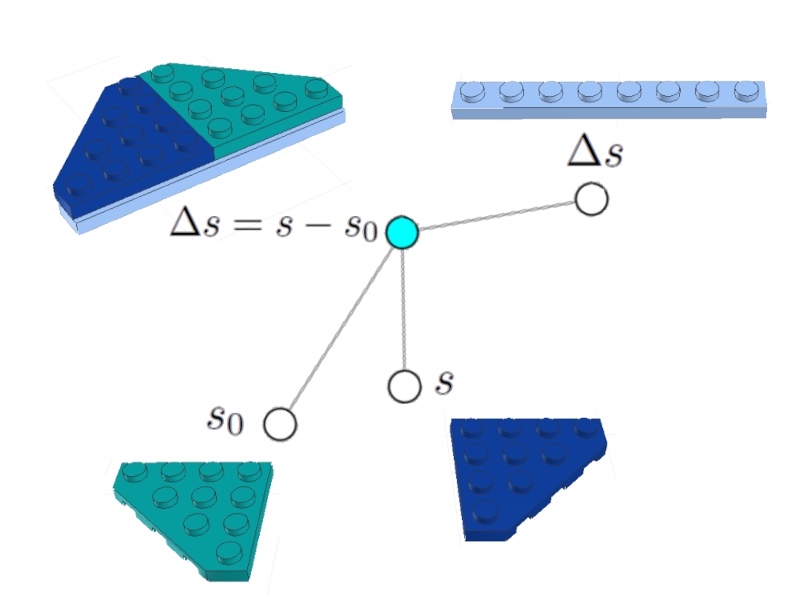
Equation of the path traveled
Images of the LEGO bricks including the representation of the equation are included.
ID:(14379, 0)
Equation: the elapsed time
Image 
The Elapsed Time Equation
$\Delta t = t - t_0$
It can be represented as a (celestial) node associated to the nodes of the variable of the elapsed time $\Delta t$, the initial time $t_0$ and the final time:
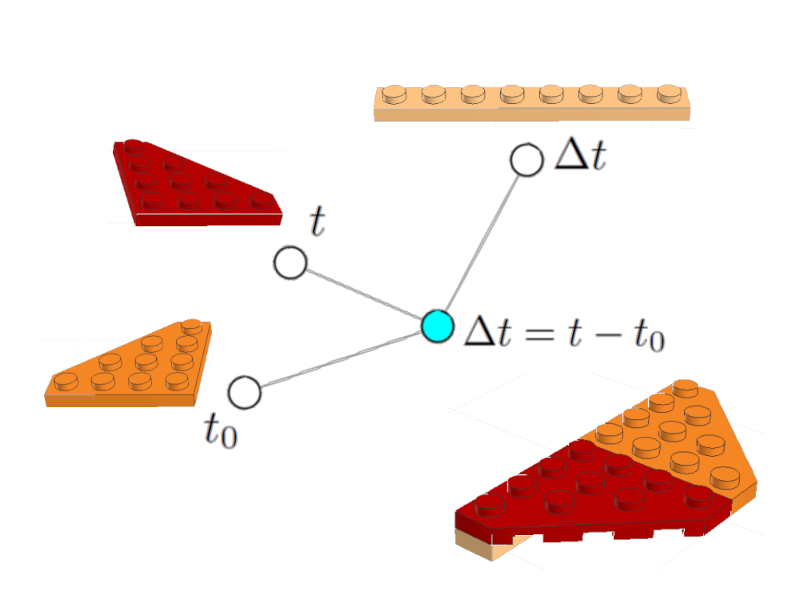
Elapsed time equation
Images of the LEGO bricks including the representation of the equation are included.
ID:(14380, 0)
Equation: the speed
Image 
The speed equation
$v = \displaystyle\frac{\Delta s}{\Delta t}$
It can be represented as a (celestial) node associated to the nodes of the velocity variable $v$, the path traveled $\Delta s$ and the elapsed time $\Delta t$:
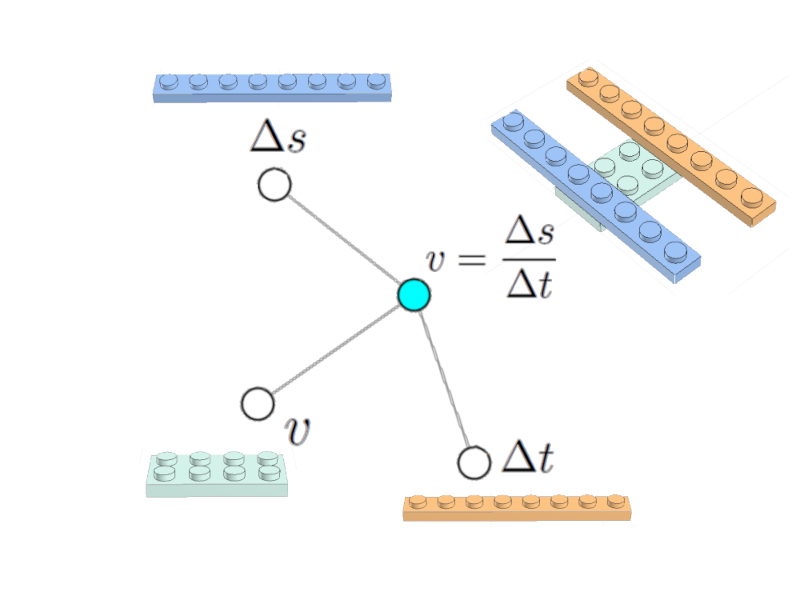
Speed equation
Images of the LEGO bricks including the representation of the equation are included.
ID:(14381, 0)
Equation: of position
Image 
With the three equations already entered, a fourth equation can be established that allows the position to be calculated at all times
$s = s_0 + v(t - t_0)$
which can also be represented as a (celestial) node associated to the nodes of the variable position $s$, initial position $s_0$, velocity $v$, initial time $t_0$ and final time $t$:
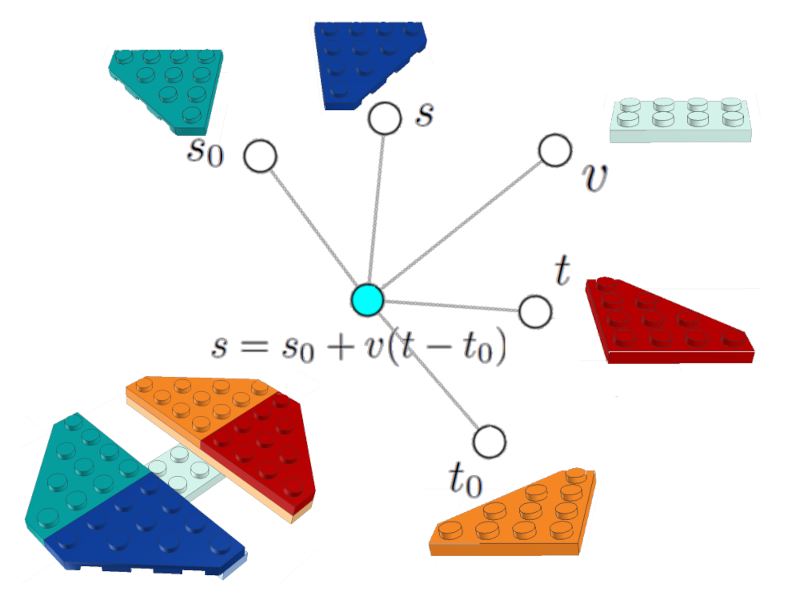
Position equation
Images of the LEGO bricks including the representation of the equation are included.
ID:(14382, 0)
Form the network
Image 
If all the equations are drawn with their respective graphs, it is seen that there are common variables that can be integrated.
It is important that each variable appears only once represented by its node (white)
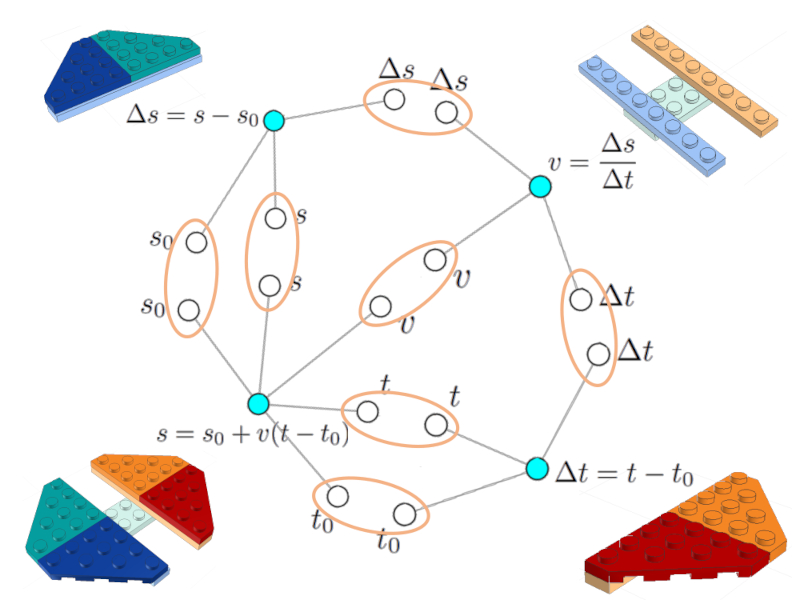
Forming the network
ID:(14383, 0)
The network
Image 
Once the common variables are integrated, the network that represents the model is obtained.
In this case, the model is simple, it only consists of 4 equations (celestial nodes) linked to each other by 7 variables (white nodes).
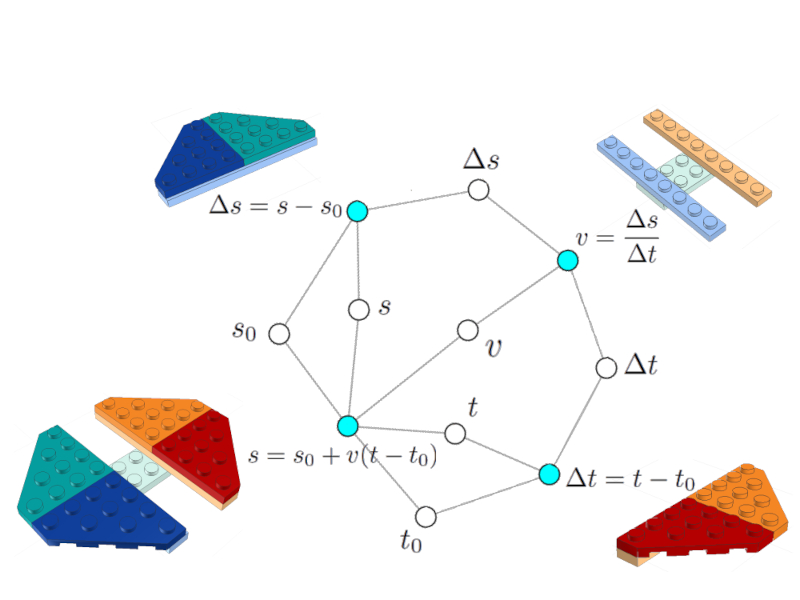
The model network
A more complex model may have multiple equations and variables. All of them linked forming a single network.
ID:(14384, 0)
Variables to calculate
Image 
In principle, every variable in the model can be calculated. In this particular case:
$s$: How far are we going to go?
$s_0$: How far away do we start?
$\Delta s$: Which way did we go?
$t$: What time are we going to arrive?
$t_0$: What time do we leave?
$\Delta t$: How long did we travel?
$v$: How fast are we traveling?
If we take in case of the time we are going to arrive, we can mark the corresponding node in the model network with red:
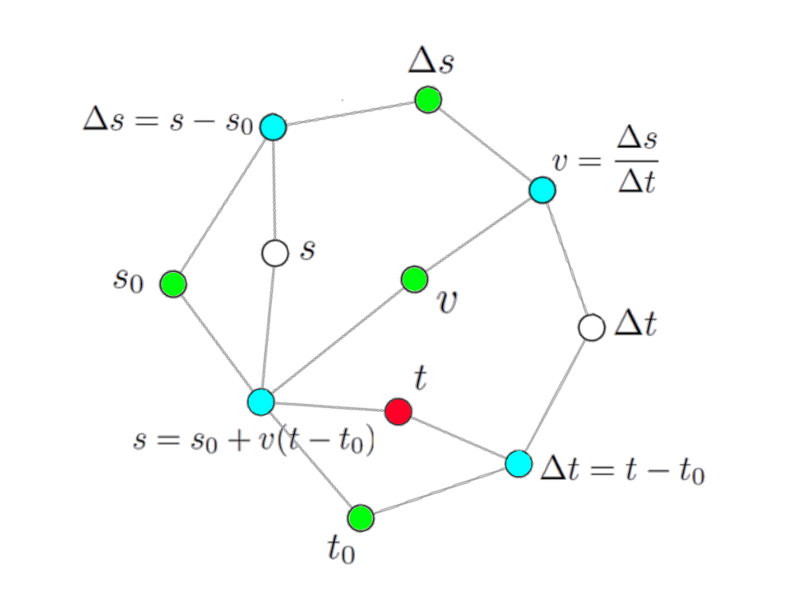
The model network for calculating the arrival time.
Consulting the network we immediately observe the associated nodes that correspond to the equations that can be used to calculate said variable. In this case they were marked in blue and correspond to the equations
$s = s_0 + v(t - t_0)$
and
$\Delta t = t - t_0$
ID:(14385, 0)
Given variables
Image 
To calculate a particular variable, we must first determine the variables whose values we are given.
To facilitate the interpretation, the nodes of the given variables can be marked with another color (light green).

The network of the model with the given variables and the variable to calculate.
In this way it is easy to see that the chosen variable cannot be calculated since both associated equations present variables for which we do not know their values (white nodes).
The general rule is
A variable (white node) can only be calculated if all other nodes associated with an equation (light blue node) are given (light green nodes). In general there cannot be more than one white node.
ID:(14386, 0)
Solution strategy via final position
Image 
The searched variable (red node) cannot be calculated because in both associated equations there are other unknown variables (white nodes).
However, it is possible to calculate these using other network equations. For this we take, for example, the variable $s$ that can be calculated with the equation of the path traveled:
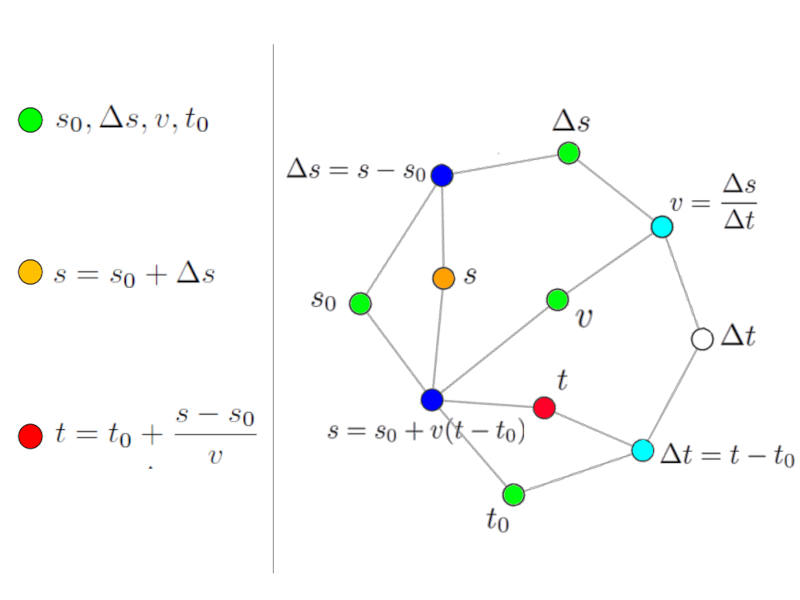
Solution via the intermediate variable final position.
Every time we identify an equation that has only one unknown (white or red node) we can use that equation to calculate that value. To facilitate the interpretation we can give a color to the calculated variable (orange).
In this way we can generalize the rule:
A variable (white or red node) can only be calculated with an equation (light blue node) if all other variables are known (light green or orange nodes).
The variable calculated in addition to the search variable is called the intermediate variable.
ID:(14387, 0)
Solution strategy via travel time
Image 
The searched variable (red node) cannot be calculated because in both associated equations there are other unknown variables (white nodes).
However, it is possible to calculate these using other network equations. For this we take, for example, the variable $\Delta t$ that can be calculated with the equation of the path traveled:
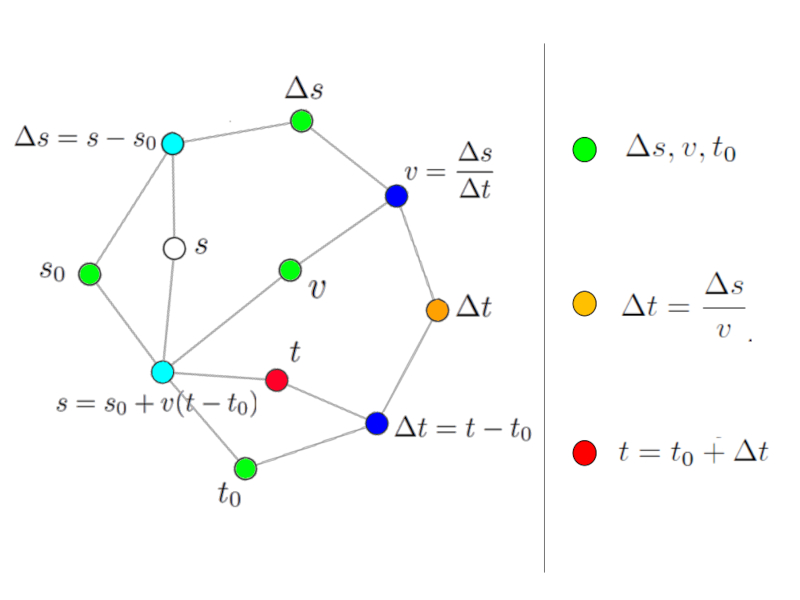
Solution via the intermediate variable travel time.
Every time we identify an equation that has only one unknown (white or red node) we can use that equation to calculate that value. To facilitate the interpretation we can give a color to the calculated variable (orange).
In this way we can generalize the rule:
A variable (white or red node) can only be calculated with an equation (light blue node) if all other variables are known (light green or orange nodes).
The variable calculated in addition to the search variable is called the intermediate variable.
ID:(14388, 0)
